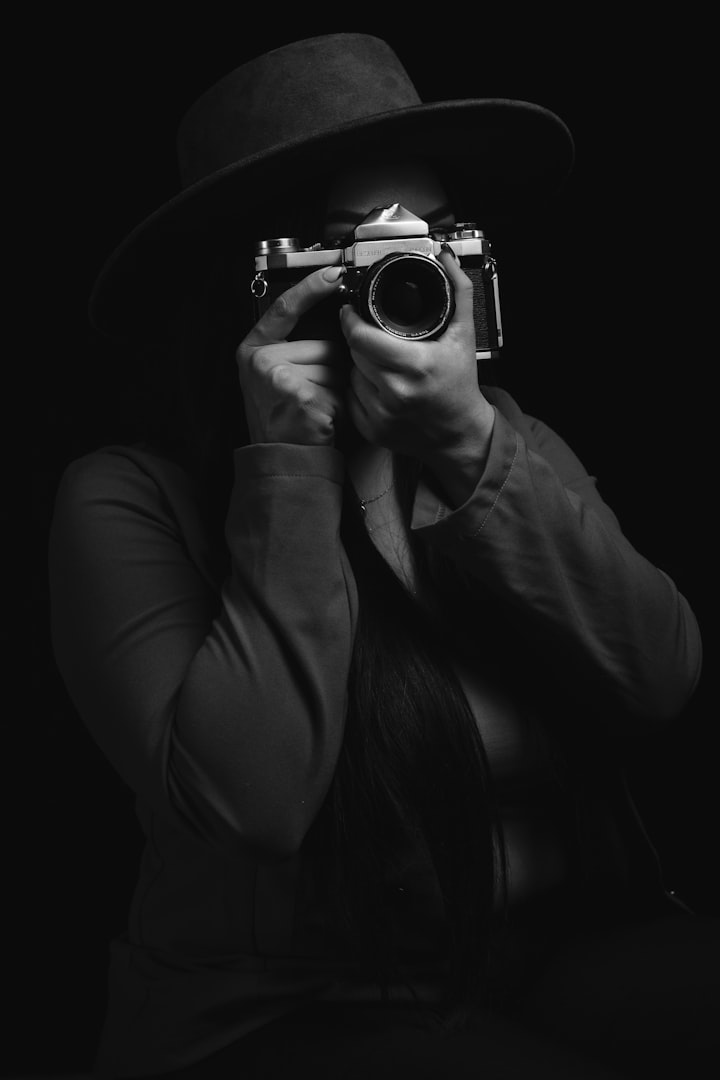Photography
A Journey Through History and Tips for Great Shots

Photography has been around for over 200 years, and since its inception, it has been used to capture memories, tell stories, and communicate ideas. Today, photography is more popular than ever, with millions of people taking pictures every day using everything from smartphones to high-end professional cameras. In this article, we'll explore the history of photography, how it has evolved over the years, and some tips and tricks for taking great photos.
History of Photography
The history of photography begins with the camera obscura, a device that allowed images to be projected onto a surface through a small hole or aperture. The camera obscura was first used by artists to create accurate drawings, and it was not until the 19th century that the first photographic images were created.
In 1826, French inventor Joseph Nicéphore Niépce captured the first permanent photograph using a camera obscura and a chemical process that he had developed. The image, a view from his window, took eight hours to expose and is now known as the "View from the Window at Le Gras."
In the following years, photography continued to evolve as new techniques were developed, including the daguerreotype, invented by French artist Louis Daguerre in 1837. The daguerreotype used a polished metal plate coated with a light-sensitive chemical to create highly detailed images. The process was time-consuming and expensive, but it quickly became popular and was used to create many iconic images of the 19th century.
In the 20th century, photography became more accessible to the general public with the introduction of smaller, more portable cameras like the Kodak Brownie, which was introduced in 1900. The Brownie was an affordable, easy-to-use camera that brought photography to the masses.
The advent of digital photography in the 1980s and 1990s revolutionized the industry. Digital cameras allowed photographers to instantly view their images and make adjustments on the fly, leading to greater creativity and experimentation. Today, digital photography is the norm, and the vast majority of photos are taken using digital cameras or smartphones.
Types of Photography
There are many different types of photography, each with its own unique characteristics and challenges. Here are just a few:
Portrait Photography - This type of photography focuses on capturing the likeness of a person or group of people. It requires skill in lighting, composition, and posing.
Landscape Photography - Landscape photography captures the beauty of nature and the outdoors. It requires an understanding of lighting, composition, and the ability to capture the mood and feeling of a particular location.
Wildlife Photography - Wildlife photography captures animals in their natural habitats. It requires patience, skill, and the ability to work with unpredictable subjects.
Street Photography - Street photography captures everyday life in public spaces. It requires the ability to quickly compose and capture a moment as it happens.
Sports Photography - Sports photography captures the action and excitement of sports events. It requires fast reflexes, an understanding of the game being played, and the ability to capture key moments.
Tips and Tricks for Great Photography
Whether you're a professional photographer or just starting out, there are some tips and tricks that can help you take better photos. Here are a few:
Understand lighting - Lighting is one of the most important factors in photography. Learn to work with natural light, and experiment with artificial lighting to create different moods and effects.
Learn composition - Composition is the arrangement of elements within a photograph. It can make the difference between a good photo and a great one. Learn the rule of thirds, leading lines, and other composition techniques.
Practice, practice, practice - The more you practice, the better you will become. Take your camera with you wherever you go and experiment with different subjects, lighting, and compositions. Take lots of photos, and don't be afraid to make mistakes.
Use the right equipment - While it's possible to take great photos with just a smartphone, having the right equipment can make a big difference. Invest in a good camera, lenses, and accessories like a tripod and filters.
Get to know your subject - Whether it's a person, a landscape, or a wild animal, taking the time to get to know your subject can help you capture it in the best possible way. Learn about its characteristics, behavior, and environment, and use that knowledge to create a more compelling image.
Experiment with different angles and perspectives - Don't be afraid to get down low, climb up high, or try different angles and perspectives. Changing your point of view can create a more interesting and dynamic image.
Edit your photos - Editing your photos can help bring out their full potential. Use software like Adobe Lightroom or Photoshop to adjust exposure, color, and other elements. But remember, editing should enhance your photo, not make it look like something it's not.
Conclusion
Photography has come a long way since its humble beginnings as a tool for artists to create accurate drawings. Today, it's a thriving industry with millions of people capturing images every day. Whether you're a professional photographer or just starting out, there's always more to learn and new techniques to try. With the right equipment, knowledge, and practice, anyone can take great photos and create images that tell stories, capture memories, and communicate ideas. So grab your camera and start your own photography journey today!
About the Creator
Melodic Narrator
Introducing the voice that will enthrall your senses and redefine your perception of storytelling. Meet melodic narrator, the captivating maestro of Vocal.Media. Embark on a journey of enlightenment with melodic narrator.






Comments
There are no comments for this story
Be the first to respond and start the conversation.